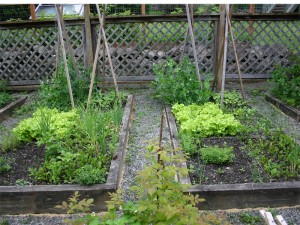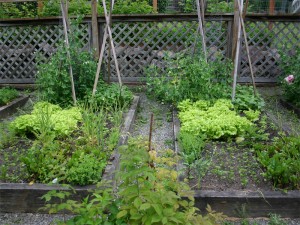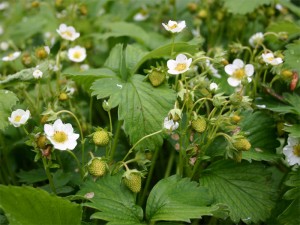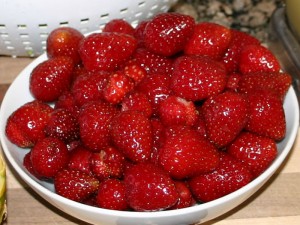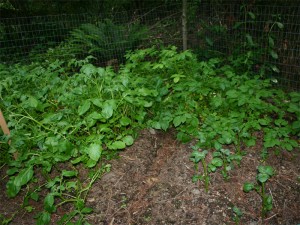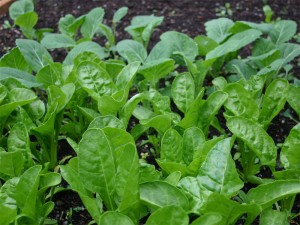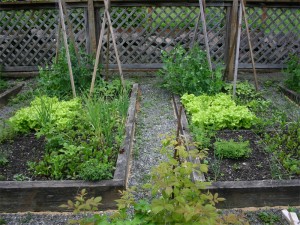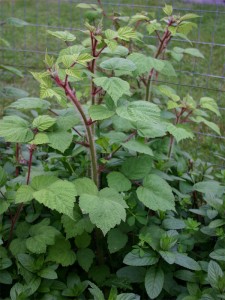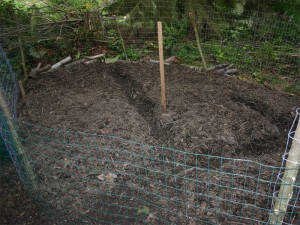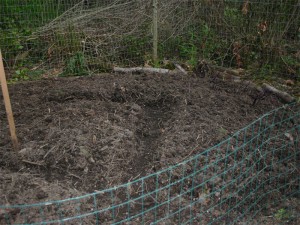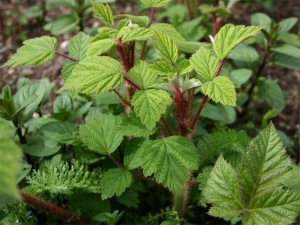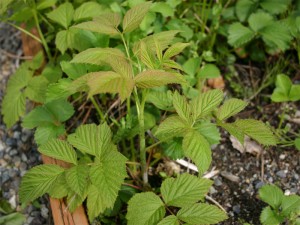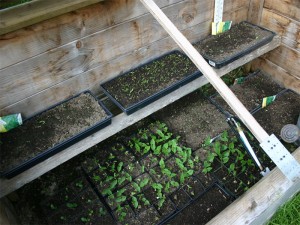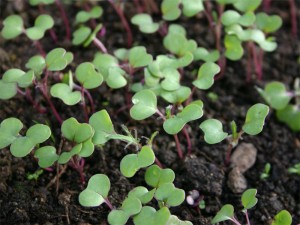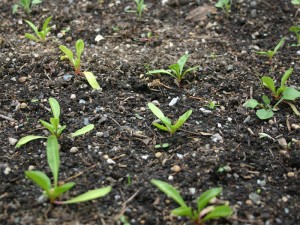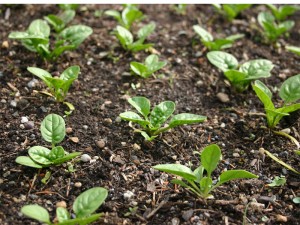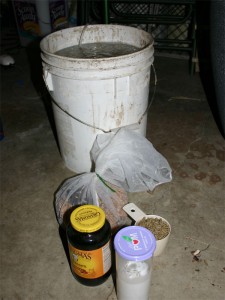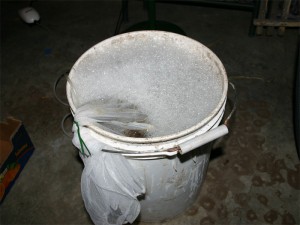I am totally shocked by the strawberry production this year! I’ve picked bowls full of berries from a small number of plants. These where ‘hand me down’ plants from a few years ago that didn’t produce any more than a local squirrel could make away with last season. This year is something else. I’ve only got a five by five foot patch, but I’m finding myself rotating through it. I harvest from one side one day and move on to the next the following day. The best part is that I get to be choosy and take only the ripe berries. The dark red seed berries are by far the best (see How to find ripe Strawberries for details).
And the sugar snaps! Wow. Every day for at least the last 10 I’ve had a sandwich bag full of pea pods for lunch. The first few bags had a flavor a little less than expected, but once the sun set in they really gained in sugar content.
If you remember my earlier articles regarding using Compost Tea as fertilizer, you might recognize the following few pictures. Well, they didn’t exist back then, but I talked about conducting a little informal experiment to see if I could notice some affects on the plants. Well, let’s take a look.
The first thing that stands out to me with this series of pictures is that we’ve had a cold spring! I mean, last year my beets were nearly climbing out of the raised beds! This year… nothing. Yet, in any case….
The bed on the right is the bed that’s received ORMUS Compost Tea (Making ORMUS Compost Tea, Why ORMUS as Fertilizer and ORMUS as Fertilizer). As you can see, I sectioned the beds into 6 rectangles and planted nearly identical plants – plants form the same seed flats planted on the same day in the same way. All the plants where transplanted from starting trays into the garden. I tried to plant the same number of plants in each rectangle.
Front left: Parsley. It’s just been too cold for this parsley to really do anything. The plants in both beds look similar.
Front right: Beets. Overall, the beets look pretty anemic. Last year, this was a dynamite crop. Yet, even though it’s kind of hard to see, the beets in the ORMUS bed (to the right) have a bit better leaf structure. I’m wondering what July will bring.
Center left: Lettuce. If you’ve been following my smoothie articles, you’d know that I’ve been eating off this lettuce for a couple weeks now. Both beds are doing well, but I believe the ORMUS bed (right) has produced more bigger plants then the control bed. The one other thing that seems strange is that the plants are maturing faster than the controls. The last picture kind of shows this. I haven’t noticed any taste difference and the plants haven’t had to deal with stress of any sort (other than lack of sunshine) yet, I’d still say that at this point, I’ve gotten more lettuce from the ORMUS side (simply because there were more bigger plants).
Center right: Spinach – Basil. If you look closely at the first pictures, you’ll see spinach in the center right rectangle. It did so poorly that I replaced it with basil. The Spinach bolted when the leaves where still microscopically small. The Basil really needs some heat so I’m hoping to report back on this.
Back left: Sugar Snap Peas: When I took the earlier pictures, I asked a visitor to the garden if they noticed anything different about the two groups. Their first comment was that the group on the right had bigger leaves. I didn’t measure them, but agreed at the time. As the second picture shows, the ORMUS peas looked to have produced more flowers. I also remember getting my first peas from these plants – but I never counted them. From these two little tee pees of peas, I’ve gotten bowls full of sugar snaps. It’s the best pea crop I’ve had in years. One last observation, it looks as if the ORMUS plants are dying back. I think they matured faster than the non-ORMUS plants kind of like the lettuce.
Back right: Kentucky blue pole beans. These will probably take another mouth before I can really talk about the fruit, but the one observation that can be made from the last picture is that the ORMUS plants are already climbing. The non-ORMUS plants are just starting to form runners, whereas the ORMUS plants have runners that are about a foot long. Some are longer and wrapping around the stakes.
Even though I’ve got these two beds for the experiment, other beds also received ORMUS Compost Tea. Here is a blooming picture of the strawberries. These green berries have been coming off by the bowl full. I’m really happy with the production and the flavor too!
Regarding the plants, they all look healthy and the berries are generally well formed.
The raspberries have also received the ORMUS Compost Tea. I’m very pleased with the growth of the leaves as you can see from these pictures. The first one is the Southern Bababerry and the second is the Anne variety. Last year the leaves on both varieties where barely the size of quarters. This year, they more than cover my palm – I’d call these leaves large sand-dollars!
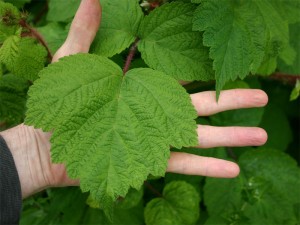
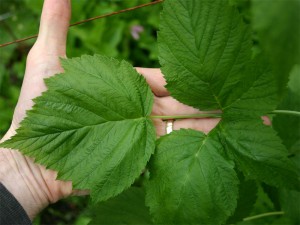 The best part about the raspberries is that the Southern Bababerry has been blooming for the last week and the bees LOVE it. If you stand nearby you can hear the busy action of the large bumbles jumping from flower to flower. Last year I got one single half formed Bababerry. This year I’m expecting to get my hands full. I can’t wait to blog about that.
The best part about the raspberries is that the Southern Bababerry has been blooming for the last week and the bees LOVE it. If you stand nearby you can hear the busy action of the large bumbles jumping from flower to flower. Last year I got one single half formed Bababerry. This year I’m expecting to get my hands full. I can’t wait to blog about that.
I can’t wait to make an update again in about a month. I’ll continue to look for little differences in the ORMUS and control beds. I’m sure that once the heat comes on I’ll really start to see differences. For now, I’m totally excited for the strawberries and raspberries. My first impression is that ORMUS and fruits go well together. On the veggie front, I still couldn’t lean one way or the other.
Oh. Can’t forget about the potato patch! If you remember from a previous posting (Heart bleeds for gardening time), you’ll remember that pictures of the ‘future’ potato patch. Well, they’re coming up.
If you look closely at these plants you’ll see slight differences in shape and color. There are white, purple, red potatoes all sectioned out. When you stand over them, it’s pretty clear where the different types of plants are grouped.
The best part about the potato patch so far is that it’s not in the garden! These potatoes are doing just fine hiding back in the woods.
Get out and get dirt under your finger nails! People should grow and gather their own food. I’m not saying all of it, just the most important parts – the part that you consume that’s living. When I pick stuff out of the garden, I eat it (mostly always raw) within minutes. People need to consume life-force energy. That comes from eating plants before it wilts. It’s not always about the minerals or molecules. It’s about making sure you get and build your life-force energy.
If getting your finger nails dirty just doesn’t work for you, consider sprouting. You can grow life-force energy in jars that make for a great addition to your diet.
Today’s activity – being happy! Make some time and choose to be happy.

